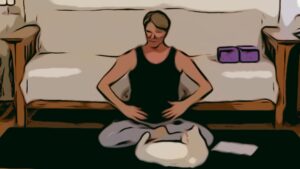 “Core Trunk” muscles stabilize our spine. We have muscles in our trunk in the front of, on the sides of, on the back, on the top of (diaphragm) and on the bottom of (pelvic floor) the spine. All these muscles play a role in supporting our spine and play a crucial role in creating smooth movement throughout the body.
“Core Trunk” muscles stabilize our spine. We have muscles in our trunk in the front of, on the sides of, on the back, on the top of (diaphragm) and on the bottom of (pelvic floor) the spine. All these muscles play a role in supporting our spine and play a crucial role in creating smooth movement throughout the body.
For someone going through THR, “core trunk” muscles can become weak in the months or years prior to surgery as we become less and less active. Following surgery, muscles can atrophy and shorten during the time it takes to recover. This weakness can have a ripple effect throughout the body, impairing how our limbs function, limiting our mobility, and affecting our balance.
The “Core Hip” muscles are responsible for stabilizing our pelvis, legs, and hips. They are composed of hip flexors, hip extensors, abductors, adductors, and external rotators – pretty much all the muscles attached to the leg bones and pelvis and those surrounding the hip joints. These muscles are responsible for helping us maintain balance, walk, climb stairs, ride a bike, bend over, kneel down,…and do yoga! And just like the trunk muscles, if they are weak this can have a ripple effect throughout the body affecting the ways we move through our daily activities.
A well-rounded yoga practice that is adapted specifically for THR provides practices that strengthen the many muscles in the trunk and hips that are associated with these “core” muscles, while at the same time building strength and stability in arms, legs, and throughout our whole body. The relaxed-paced classes on Yoga for Hip Replacement are designed to offer a whole-body experience while at the same time keeping our hips strong, stable, and safe.
Become a Yoga for Hip Replacement Member here
Articles and Studies:
Twelve-Minute Daily Yoga Regimen Reverses Osteoporotic Bone Loss
Muscular strength after total hip arthroplasty: A prospective comparison of 3 surgical approaches
Changes in Hip and Knee Muscle Strength in Patients Following Total Hip Arthroplasty
Persisting muscle atrophy two years after replacement of the hip
